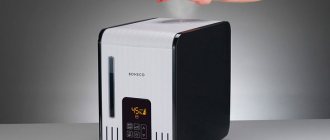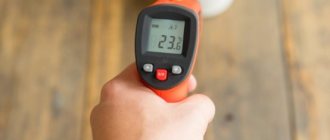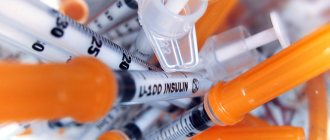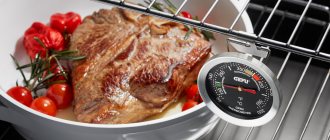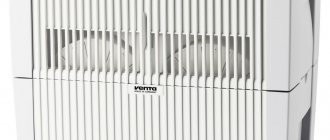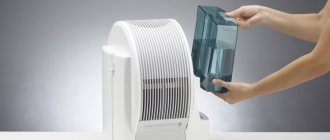A medical thermometer is a basic device that should be in every first aid kit. It is needed for any illness, but if previously everyone used only mercury thermometers, now the range of devices is more extensive.
Which thermometer should you choose for your home: electric or non-contact?
Which devices show temperature more accurately? These questions should be answered before purchasing. First of all, they determine the budget, then decide who will primarily use the device.
If you are buying a thermometer for a family with children, it is better to avoid mercury thermometers.
We analyzed user reviews and compiled a small rating of thermometers for household use.
The selection includes devices of different types in price/quality ratio, but all of them are suitable for home use, as they are safe and easy to use.
Also, when compiling the rating, data on purchases of thermometers in 2021, expert advice and official test data from Rostest were taken into account.
Thermometers
Thermometers can be divided into several types:
- by application and temperature range room thermometers - from 0°C to +50°C
- window thermometers - from -70°C to +50°C
- water thermometers - from 0°C to +50°C
- kitchen thermometers - from 0°C to 300°C
- sauna thermometers from 0°C to +140°C
- thermometer in the refrigerator or cellar -30°C to +50°C
- thermometers for gardeners
Liquid thermometers
- these are the ones that come with a capillary flask inside. The flask contains a liquid that expands when heated, but decreases in volume when cold.
The composition of such liquids most often is methylcarbitol (methyl alcohol - CH3(OCH2CH2)2OH), more popularly known as an “alcohol solution”. Sometimes kerosene is used as a filler. Both fillers are relatively safe compared to mercury.
Advantages:
- fairly fast response to temperature changes
- different degrees of accuracy : measuring steps from 0.5°C to 2°C
Flaws:
The glass from which the thermometer and its bulb/capillary are made can break if handled carelessly
Examples of room thermometers:
- Souvenir thermometers
- Decorative thermometers
Operating principles of different types of thermometers
Let's take a closer look at each type of these measuring instruments.
Mercury
It is a glass flask with a drop of mercury sealed inside. Under the influence of body temperature, the metal expands, and the column of the medical device in the flask rises.
This thermometer is easy to use in any part of the body, but it is fragile and can easily break, spraying a substance hazardous to human health - mercury - into the room. Recently, they have begun to produce versions of devices in special capsule shells. The capsule does not affect the measurement of body temperature, but if the thermometer breaks, the mercury will not spill out. So in the event of an emergency, there is only the danger of a cut from shrapnel.
Tip: Store the mercury device in the case with the column facing down.
Galinstanovy
In appearance it is no different from the previous model, but there is no mercury inside, and one of the liquid metals is pumped in:
- gallium;
- indium;
- tin.
Having broken such a thermometer, you won’t have to panic and collect balls of mercury around the room and call rescuers or the sanitation station.
But in order to measure the temperature with such a thermometer, you will have to sweat a little - it is difficult to knock down the thermometer column after the previous measurement, and in order to obtain accurate temperature data, you will have to press the device very tightly to the body.
Electronic
This is a plastic tube in which the mechanism is hidden, and a liquid crystal display showing the measurement data. By pressing the button, press the thermometer tightly against the body, and after 3-5 minutes it beeps to indicate the completion of the procedure and displays the result on the screen. For hygienic purposes, the kit includes replaceable caps.
To obtain more accurate readings, you will have to install the device in the mouth or rectum, and to achieve accurate results under the arm, you need to hold the thermometer not until the signal, but, like a mercury thermometer, for 10 minutes.
Disadvantages include the high cost of the medical device, as well as the difficulty of measuring body temperature in children who find it difficult to remain still for so long.
Infrared
The device is used not only to measure the body temperature of people, but also the environment, and the result appears on the display within 1-2 seconds. The presence of backlight allows you to take measurements even at night. It is convenient to use this type of unit for measuring the body temperature of newborns and unconscious people.
Such a toy is quite expensive, but it works with errors, so for the accuracy of the results you will have to take measurements several times in a row.
It will not be possible to measure low body temperature with such a thermometer.
Rectal
Measures temperature through the anus . Often used by women to identify days of ovulation. They are also used to check the condition of the body in children, most often under 3 years of age. After lubricating the tip with baby cream, it is inserted rectally to a depth of 5 cm, and the readings are taken after a few minutes. The device is good, but not in the cheap category, and it cannot boast of durability.
Ear
Typically, this electronic device is used not only to measure temperature in the ear of infants, but also by applying it to the child’s forehead. By pressing the “On” button, the tip is inserted into the ear and, after waiting for a signal, it is removed, looking at the indicators on the display. The temperature is measured quickly and painlessly, but errors in the readings are observed within 0.1-0.2 degrees.
forehead
Can be electronic or in the form of a sticker. The first type shows measurement data on the display, the second is pasted on a clean and dry forehead. In this case, you should not touch the numbers with your fingers. After 20 seconds, the device will show the result.
This sticker is not disposable - it is convenient to use on the road or to measure the body temperature of a sleeping child. However, over time the sticky layer will weaken and you will have to support the device with your fingers.
Mechanical thermometers
These are the following types of bimetallic thermometers:
- They work on the principle of “elastic deformation”: in a bimetallic thermometer there are 2 connected plates with different “linear expansion coefficients”, i.e. when the temperature changes in one direction or another (+ or -), this strip of metal bends and turns the calibrated arrow on the thermometer dial
- There are thermometers with a metal spring : the same principle - the spring diverges under the influence of temperature or, on the contrary, narrows. This causes the thermometer needle to move along the adjusted scale.
Advantages:
- all the same as liquid thermometers
- Durable housing: slight falls will not damage integrity or accuracy
Flaws:
the price is a little more expensive than liquid ones
Thermohygrometers and psychrometers
is simply a “thermometer + hygrometer” (relative air humidity meter) in one device.
How a thermometer works has already been described above - there is no difference in this case, but a hygrometer records relative humidity.
The only thing that is important to remember is that household hygrometers (both digital and “analog”) come with an error of ± 2-5% in estimating relative humidity. And for household purposes it is often more than enough. Only a psychrometer will provide accurate data on humidity - more on that below.
How a hygrometer, or more precisely, knowledge of relative air humidity, is useful to you:
First, let's look at the standards and SNIPs; the normal indicator of relative humidity in a room is considered to be from 45% to 60%
Water thermometers
The types of such devices are most often intended for bathing small children. Parents use them to control the water temperature during bathing, which is especially important for newborns. The scale of such devices is designed for readings from +10 to +50 degrees Celsius. However, some water thermometers are equipped with a red mark on a scale of 37 degrees Celsius. This indicator is just the most optimal for bathing children.
Also, some thermometers (types and varieties of mercury thermometers) can be shaped like animals and cartoon characters, which attracts the attention of a child learning about the world around him. However, remember that such a thermometer may be damaged in the hands of a child. This means that mercury can simply depressurize, which is very dangerous for human health. Therefore, in this case, select devices that are maximally protected from mechanical damage or electronic ones. But the latter are much more expensive than mercury thermometers. Thermometers that measure human body temperature can be mercury, electronic and infrared. The third option is the safest and most accurate of its kind, so keep it in your home medicine cabinet.
Excess humidity or too dry air - what is dangerous?
- if 60-70% is exceeded, mold, fungi and subsequent colds, allergies, etc. can develop in the room. And then bronchial asthma and tuberculosis. This is especially important for the health of the child, and even more important for infants.
- at levels less than 30% it can negatively affect the condition of the skin and eyes . The nasopharynx and oral cavity, which are dry because of this, are the cause of upper respiratory tract diseases or the activation of chronic ones (bronchitis, asthma, pharyngitis).
Tip: How to make the air more humid?
The simplest, but not always possible, is to place a wet towel on a heated radiator battery . But it is better to use special air humidifiers for this.
Psychrometers
The measurement of air humidity in a psychrometer is calculated by the difference between the readings of two thermometers : dry and wet. Of course, the one that is wet is immersed in a small cap with water, which evaporates and regulates the readings of the “wet thermometer”.
Here are examples of popular psychrometers:
Psychrometric hygrometer Steklopribor VIT-1
Relative humidity measurement range depending on temperature: humidity, % from 20 to 90; temperature, °C +5…+25
650
Psychrometric hygrometer Steklopribor VIT-2
Relative humidity measurement range depending on temperature: humidity, % from 20 to 90; temperature, °C +26…+40
650
How to work with them is written on the page of the psychrometers themselves. In fact, you need some easy arithmetic and find the necessary parameters in the attached table: the difference in the readings of the wet and dry thermometers at the applied temperature gives the most accurate value of relative air humidity.
Who needs psychrometers:
- for those who want accurate temperature and humidity readings
- to those who saw that the readings of their digital or other “analog” hygrometer were “lying”
- to control the cultivation of plants sensitive to humidity
- for warehouses of food, furniture, etc., where compliance with the humidity regime is a guarantee of product safety.
- useful for kindergartens and other institutions where there is fundamental accuracy in accordance with GOST and SNiP.
Weather stations
Weather stations are a home digital device for complex indicators of temperature and humidity. Often, more advanced models also have a clock, alarm clock and barometric pressure indicators.
There are also weather stations that can provide short-term weather forecasts and display the history of readings for one of the measurements on the indicator: temperature, humidity, pressure.
There is also a feature: some types of weather stations to which you can connect 1 to 3-4 additional external sensors.
For example, - place one in another room (for example, in a child's room), - the second one outside, - and the third sensor is already built into the weather station itself. |
And watch 3 readings in order to get dressed in time to go outside, turn on the humidifier in the nursery or, conversely, the dehumidifier in the main room.
Contact and non-contact thermometers
Measuring the temperature of various surfaces can be performed either contact or non-contact. The contact method of measurement, the most common in all areas of production and in everyday life, is carried out by simply touching the thermometer to the object. All of the above types of instruments for measuring temperature, with the exception of some infrared ones, are classified as contact ones.
Infrared thermometers that appeared not so long ago are divided into two types:
- contact ones, used to measure the body temperature of children and adults by point-touching the forehead or ears (forehead, ear thermometers);
- non-contact (pyrometers), allowing you to determine temperatures in the range from -50 to 4000 ° C at a distance from several centimeters to several meters.
Kitchen thermometers
This is a separate category of thermometers for measuring either the temperature of meat (or any other product), or for measuring the temperature of the oven, or both.
For a “temperature probe,” which is what they most often prefer to call such thermometers, the technology is simple - a bimetallic element, which is a temperature indicator. Some models have designated types of meat being cooked: chicken, pig, cow, which often makes it easier to understand the set temperature, what kind of meat and when it will be ready:
